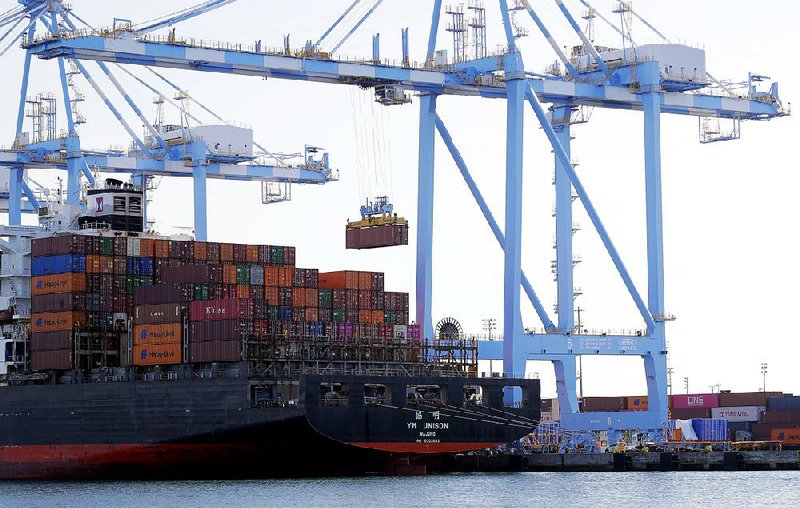The U.S. trade gap narrowed in November to the smallest in three years as exports advanced during a thaw in the trade war with China, while imports fell to the lowest since 2017.
The overall U.S. deficit in goods and services shrank 8% to $43.1 billion in November from $46.9 billion the previous month, according to data released Tuesday by the Commerce Department. The median estimate of economists surveyed by Bloomberg called for a shortfall of $43.6 billion.
The figures suggest the gap may shrink on an annual basis for the first time since 2013, largely reflecting a steep drop in imports from China after President Donald Trump's tariffs on goods from the country, along with America's shift to becoming a net exporter of petroleum. However, the trade battle has cast a pall over U.S. manufacturing and caused business investment to slide as companies wrestle with uncertainty.
While Trump sees the U.S. trade deficit as a sign of economic weakness that can be overcome with tougher trade deals, mainstream economists said the deficit reflects an economic reality that doesn't yield much to changes in government policy: Americans consume more than they produce, and imports fill the gap.
Andrew Hunter, senior U.S. economist at Capital Economics, said he believed gross domestic product growth would come in around 2% in the October-December period with the trade improvement providing much of that strength.
But he cautioned that the improvement was built on a number of special factors that will not be repeated such as the end of the strike at General Motors, which boosted auto exports. Still, he said with global manufacturing starting to improve, the worst of the trade slump may be over.
The U.S. and China announced a phase-one accord in mid-December after agreeming in October on the broad contours, at least temporarily calming fears of an escalating trade war. The deal will involve reduced tariffs in exchange for more Chinese purchases of American farm goods such as soybeans and pork as well as commitments on intellectual property, forced technology transfer and currency markets.
The merchandise trade deficit with China shrank to a seasonally adjusted $25.6 billion, the smallest since 2013, according to data compiled by Bloomberg. Exports to the Asian nation rose by $1.4 billion, the most since February, while imports declined for a sixth-straight month, reflecting the toll of more than a year of tariffs.
For the first 11 months of 2019, the overall gap in goods and services was $563 billion, compared with $566.9 billion in 2018; for merchandise, the deficit narrowed to $791.2 billion from $806.4 billion.
Trump has said he'll sign the trade deal in Washington on Jan. 15. A Chinese delegation, led by its top trade negotiator, Vice Premier Liu He, will travel to the U.S. capital to sign it, according to people familiar with the matter, Bloomberg reported this week.
Even as a shrinking deficit provides a possible talking point for Trump, overall U.S. trade with China has fallen sharply in 2019, dropping the Asian nation to third place among trading partners, behind Mexico and Canada.
In the first 11 months of last year, merchandise imports from China were down 15% and exports to the country dropped 11.4%. The U.S. goods deficit with China narrowed to a seasonally adjusted $319.8 billion from the same 11 months of 2018, the report showed.
Overall exports of goods and services in November rose 0.7% to $208.6 billion, including gains in consumer goods, capital goods and soybeans. Imports fell 1% to $251.7 billion, with declines in civilian aircraft, consumer goods and petroleum products.
Imports and exports of petroleum both fell in November but imports declined by a larger amount, pushing up the size of the U.S. surplus in petroleum to $832 million, the third-straight month the country has run a petroleum surplus and the largest amount on records going back to 1978.
Information for this article was contributed by Scott Lanman and Ana Monteiro of Bloomberg News and by Martin Crutsinger of The Associated Press.
Business on 01/08/2020
